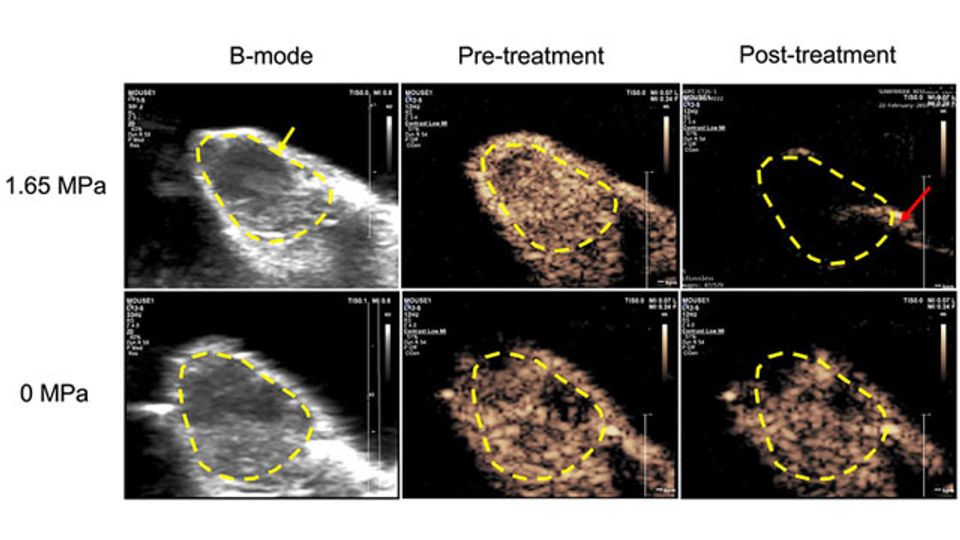Using Microbubbles for Localized Delivery of Anticancer Drugs

Complete the form below to unlock access to ALL audio articles.
Microbubbles can assist with localized drug delivery in a patient's body by popping at a target site to create enhanced permeability of tumor blood vessels. By temporarily increasing the porosity of the blood vessels, the microbubbles can create a means for coinjected anti-cancer drugs to preferentially leak into the tumor for treatment.
Naomi Matsuura, of the University of Toronto, and her team are adapting microbubbles to become more potent tools for cancer therapy. By shrinking the bubbles and directly loading them with anti-cancer drugs, the bubbles can lower the dose of free drug that is injected and diffuses into nontumor tissue in the body. This results in more targeted treatment and fewer side effects for the patient.
Matsuura will discuss her team's results in her presentation, "Ultrasound-stimulated, drug-loaded bubbles for cancer therapy," as part of the 182nd Meeting of the Acoustical Society of America at the Sheraton Denver Downtown Hotel. The session will take place May 24 at 11:30 a.m. Eastern U.S.
The team loaded taxanes, a commonly used anti-cancer drug, onto the bubbles. Because the drug is hydrophobic, it avoids water and sticks to the bubble easily, avoiding any leakage into the bloodstream or surrounding tissue until the bubble is stimulated by ultrasound.
They plan to extend the bubbles to carry other types of drugs as well, but the drug loading tends to be lower and less stable for hydrophilic materials.
"We are also modifying the pattern of the sound waves in a way that makes the anti-cancer drug more potent in comparison to a regular intravenous drug injection," said Matsuura.
"If we can combine lower side effects from direct drug loading with a more potent effect of the drug by modifying systems that are already in place for patients, we have a chance to make an impact on the outcomes of cancer patients in a relatively short period of time."
Reference: Matsuura N. Session 2aBAb2 – Ultrasound-stimulated, drug-loaded bubbles for cancer therapy. Paper presented at: 182nd Meeting of the Acoustic Society of America, May, 23–27 2022; Denver, Colorado.
This article has been republished from the following materials. Note: material may have been edited for length and content. For further information, please contact the cited source.



